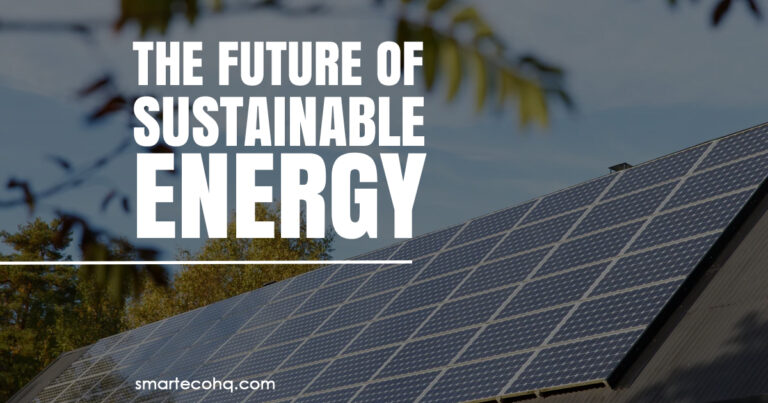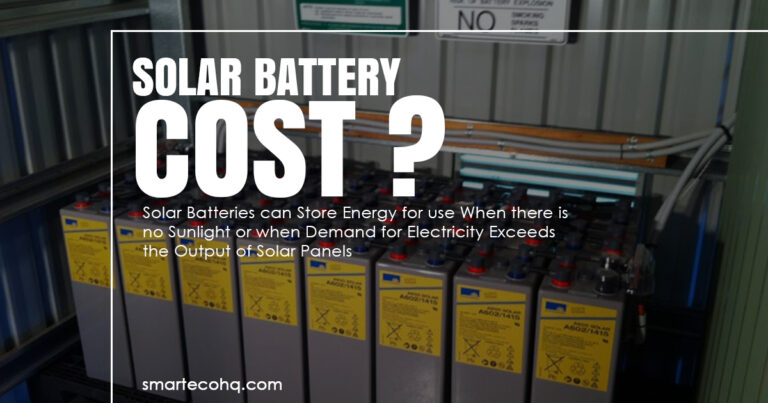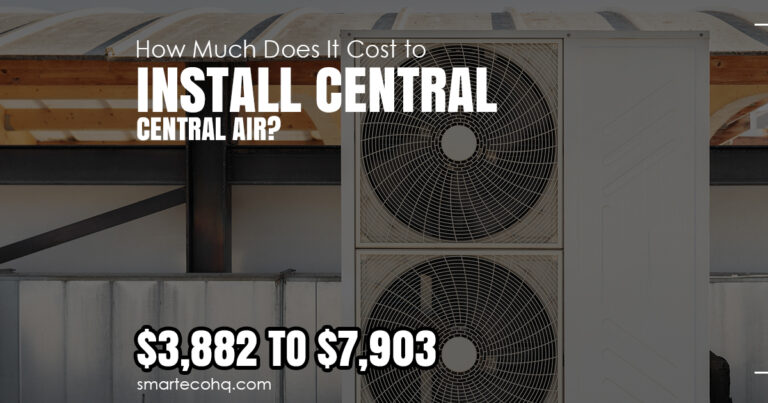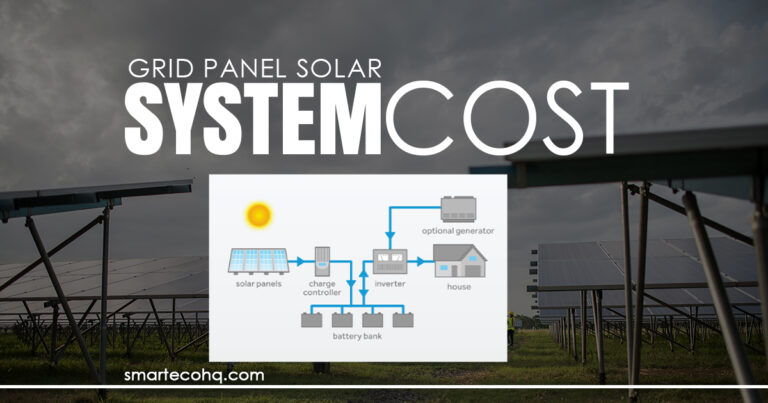Cost of Installing Central Air Conditioning in Your Home
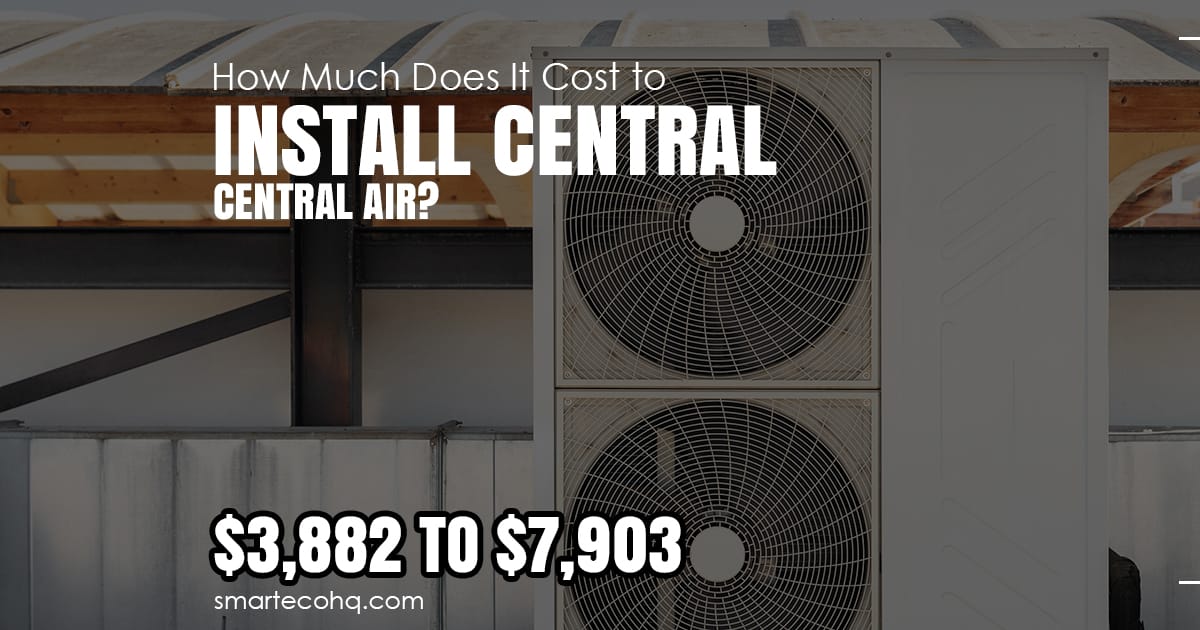
Ready to beat the heat? Find out the Cost of Installing Central Air Conditioning in Your Home. Get a free quote and start chilling in style!
1. Cost Estimation of Installing Central Air conditioning
Here is an estimated cost of the installing Central air conditioning system .
| Factor | Cost Ranges |
| System Type | $2,500 – $7,000 |
| Installation Complexity | $1,000 – $5,000 |
| Ductwork Modifications | $500 – $2,000 |
| Additional Features | $500 – $3,000 |
| Electrical Upgrades | $500 – $2,000 |
These cost ranges are estimates and may vary depending on a number of factors, including the size and complexity of the installation, the precise geographic region, contractor rates, and any additional features or adjustments required. To acquire an accurate cost estimate for your specific installation, talk with expert installers and obtain thorough quotes.
What are the factors that Affect the cost of installation?
There are a number of variables that can Affect how much it will cost to installing Central Air Conditioning system, including:
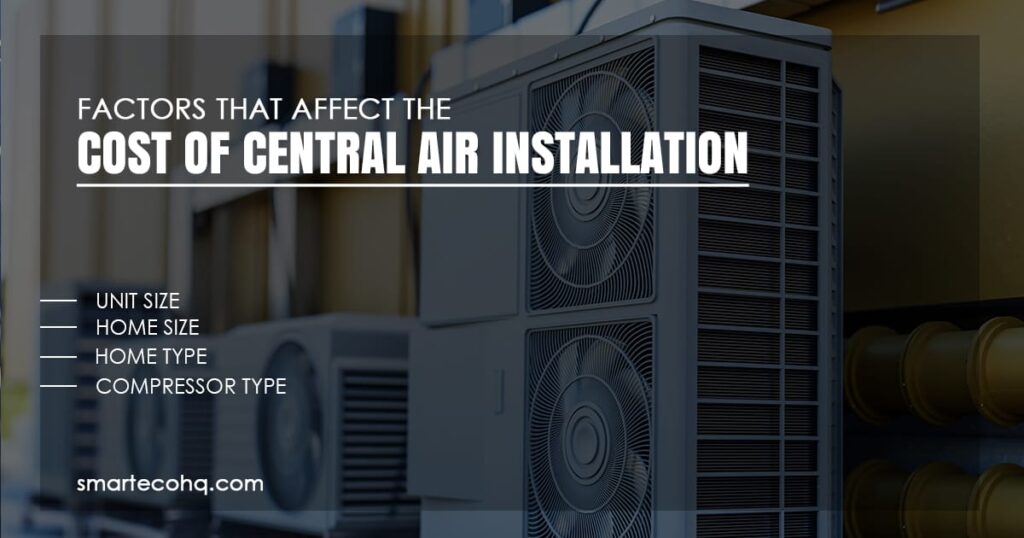
System Size:
The size of the air conditioning system required is directly related to the size of the building or dwelling. Larger buildings necessitate more powerful cooling systems to efficiently cool the space. The cost of installation rises as the system size grows, as larger units and more extensive ductwork may be necessary to satisfy the cooling demands of the space.
System Type:
The installation costs of various types of central air conditioning systems vary. Because ductless systems require individual units for each zone and additional refrigerant lines, they are often more expensive to install than split systems. Split systems, on the other hand, use ductwork to circulate cold air throughout the space, which may already be present in some homes and can save money on installation.
Installation Complexity:
The installation process’s complexity can affect the ultimate cost. If the installation necessitates significant changes or additions to the existing ductwork, such as running new ducts or altering the layout, the labor and material expenses will rise. Furthermore, installations in difficult-to-reach regions or in residences with limited access may necessitate more time and effort, resulting in greater installation costs.
Efficiency Assessment:
High-efficiency systems have a higher initial cost than less efficient systems. They can, however, deliver long-term energy savings as well as decreased power bills. While the initial investment may be costlier, the lower energy usage over the lifespan of the system can help balance the cost difference and result in overall cost savings.
Contractor Pricing:
Because contractor pricing structures differ, it is critical to receive bids from many trustworthy contractors. Each contractor may have his or her own pricing model, which may include labor rates, overhead costs, and profit margins. Comparing quotes enables homeowners to weigh their pricing options and select a contractor who offers a fair and competitive price for installation.
Geographic Location:
Installation charges can vary depending on where you live. Labor costs in cities tend to be greater than in rural areas due to variables such as higher living expenditures and increased competition. Local building codes, permit fees, and transportation expenses can also vary by region, affecting the entire installation cost.
Additional Features:
Adding extra features and upgrades can raise the overall cost of installation. Smart thermostats, zoning systems, and modern air purification systems improve usefulness and comfort but come at a cost. When calculating the overall cost of installation, homeowners should consider the benefits and long-term worth of these amenities.
How do Central Air conditioners Work?
Central Air conditioners circulate cool air throughout a building or residence by using a ventilation system. The external unit, which houses the compressor, condenser, and fan, starts the cooling process.
The compressor pressurizes and circulates refrigerant gas, which enters the outdoor unit’s condenser coil. The heat absorbed by the refrigerant is released by the condenser coil and discharged outside by the fan. The now-cooled refrigerant is routed through a series of pipes to the interior unit, where it passes through.
What Are the Types of Central Air Conditioners?
Split Air Conditioning Systems:
Split air conditioning systems are the most prevalent kind of central air conditioning system. They are made up of an indoor unit with an evaporator coil and another fan, as well as an outdoor unit with a compressor, condenser, and fan. A network of pipes and refrigerant lines links the two units
Packaged Air Conditioning System:
In a packaged system, every element of the air conditioning system is contained in a single unit that is typically installed on the building’s roof or a concrete slab next to it. For smaller structures and homes with constrained indoor space, such a system is ideal.
Ductless Heating and Ventilation Systems :
Using a small outdoor unit that is connected to one or more indoor air handlers by a network of refrigerant lines, ductless systems, also referred to as mini-split systems, provide both heating and cooling. These systems work best in homes without ductwork or in addition to existing homes where extending ductwork is impractical.
Hybrid System:
Using a heat pump, which can alternate between cooling and heating modes, a hybrid system combines a conventional central air conditioning system. Homes in moderately temperate regions where both heating and cooling are frequently required benefit most from this kind of system.
Geothermal System:
Geothermal systems heat and cool buildings by utilizing the constant earth’s temperature. Although they are more expensive to install, they may end up being more affordable and cost-effective in the long run.
What are the Benefits of Air Conditioners?
Air conditioners have a number of advantages, including:
Comfort: One of the most obvious advantages of Air conditioners is that they provide cool and comfortable indoor environments, particularly in hot and humid weather.
Improved Indoor Air Quality:
Air conditioners can help improve interior air quality by lowering humidity levels and filtering out pollutants.
Increased Productivity:
Studies have shown that comfortable indoor conditions can boost productivity by reducing weariness and distractions.
Lower Risk of Heatstroke:
Air conditioning can help minimize the incidence of heat-related disorders such as heat stroke, especially for susceptible groups such as the elderly or those with medical issues.
Protection of Electronic Devices:
High heat and humidity can damage electronic gadgets. Air conditioning can protect them and help them live longer.
Reduced Symptoms of Allergies and Asthma:
Conditioning can help minimize airborne allergens and irritants, making it easier for people who suffer from allergies or asthma to breathe comfortably.
Better Home Security:
With air conditioning, windows and doors may be kept closed, increasing security and lowering the risk of a break-in.
How to Save Money on Air Conditioning?
Here are some strategies for saving money on air conditioning:
- When you’re not home, use a programmable thermostat to raise the temperature.
- Close curtains or blinds during the hottest parts of the day to keep your home cooler and block out sunlight.
- To circulate cool air around the room, use ceiling fans or portable fans.
- To maintain maximum efficiency, keep air conditioning filters clean.
- Make sure that your windows and doors are properly sealed to keep cool air from escaping.
- Shade devices, such as awnings or trees, should be installed to block direct sunlight and reduce heat gain.
- Consider installing a high-efficiency air conditioning system to save money on energy bills in the long run.
- Rather than cooling the entire house, use a portable air conditioner or a window unit to cool specific rooms.
- To cool your home, use natural ventilation, such as opening windows at night to let cool air in.
- Perform yearly air conditioning maintenance in order to guarantee preventing expensive repairs.
Can I install my Central AC by myself?
Installing a central air conditioning system is a difficult task that demands extensive technical knowledge and skill. To guarantee that the installation is done professionally and safely, it is normally suggested that you employ a competent HVAC contractor. HVAC systems have electrical and refrigerant components, and inappropriate installation can result in poor performance, safety problems and potential equipment damage.
Attempting to install a central air conditioning system without the proper knowledge might result in costly mistakes and may void any warranties on the equipment. By leaving the installation to a skilled HVAC technician, you can prioritize safety and quality.
FAQs
Q: How much does it cost to install central air conditioning?
A: The cost can vary depending on factors such as the size of your home, existing ductwork, and the type of system you choose. On average, installation costs range from $3,000 to $7,000.
Q: What factors influence the cost of central air conditioning installation?
A: The factors include the size of your home, the complexity of the installation, the type and efficiency of the system, and any additional upgrades or modifications needed.
Q: Does the cost of installation include the price of the unit?
A: Typically, the installation cost does not include the price of the unit itself. It covers the labor, materials, and any necessary permits. The cost of the unit will be an additional expense.

